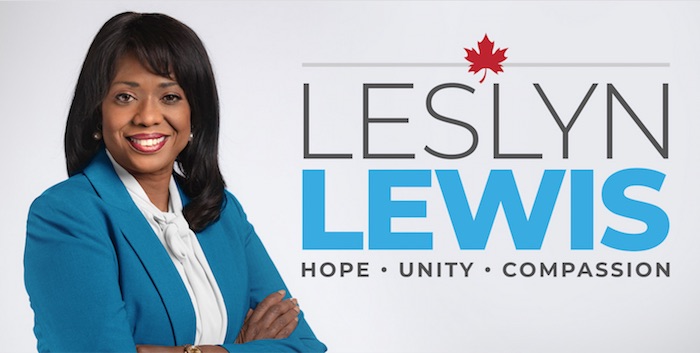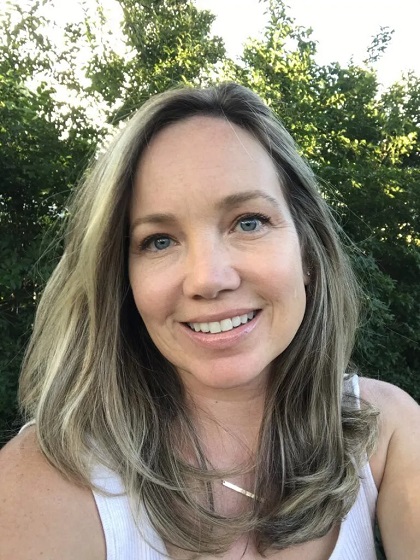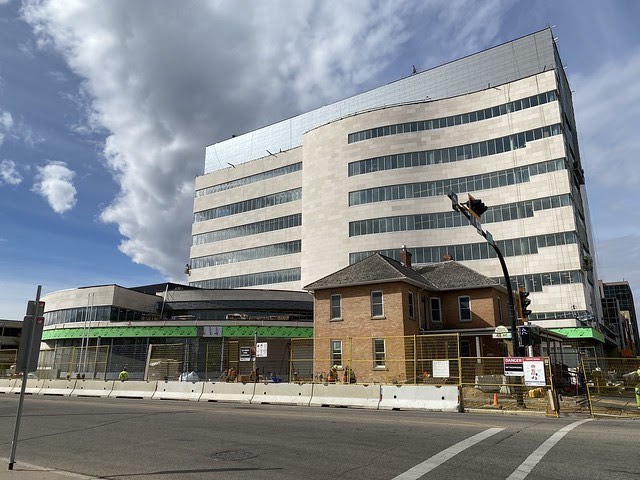Justice
Conservative leadership candidate argues Tamara Lich a political prisoner

Article submitted by Leslyn Lewis
A political prisoner is defined as “a person imprisoned for their political beliefs and actions.”
This definition begs the question of whether Trucker Convoy organizer Tamara Lich is a political prisoner.
In a previous letter, I outlined the fact that the first judge who detained Tamara was a former Liberal candidate, and the crown attorney who prosecuted Tamara had donated over $17,000 to the Liberal Party since 2013.
The fact that that we have to ask if Canada has political prisoners, speaks to the state of our declining democracy. But there seems to be no depth that Justin Trudeau and the Liberals will not sink to in order to control our thoughts, actions and even our democratic institutions.
We never imagined our government would invoke the Emergencies Act without exhausting existing options and without a request from law enforcement – but that happened.
We also never conceived that Canadians could be targeted for their political views, their property confiscated and their bank accounts frozen out of a political vendetta – but that too occurred in our democracy.
These events have sent tremors into the hearts of Canadians, some of whom have picked up and left this country out of fear that we are descending into a full-blown dictatorship. Some patriots I’ve met have even been put on a terrorist watch list just for attending the Freedom Convoy protest.
Tamara was recently released from jail after being arrested for allegedly breaching her bail conditions at a civil liberties awards gala event. Tamara, who is a 49-year-old Métis grandmother with no criminal record, spent 49 days in jail awaiting trial for charges stemming from her role as a Freedom Convoy organizer.
The Crown argued that she was a danger to the public and would likely reoffend, despite the fact that all of her charges were non-violent in nature.
In this extraordinary case, Tamara appeared before the court 5 times relating to bail conditions – [see the table summary of her case at the bottom of this email].
A Political Prisoner? Summary of the Evidence
Here are the facts leading up to Tamara’s latest arrest and bail hearings:
- Tamara’s original bail conditions prohibited her from communicating with any convoy organizers EXCEPT in the presence of her lawyer or through her lawyer.
- The alleged bail breach happened at a civil liberties awards gala where Tamara was receiving an award on June 16th, 2022; she was seen interacting with fellow convoy leader, Tom Marazzo. There were pictures and a video that showed her sitting at the same table as Mr. Marazzo and giving her acceptance speech. Upon returning to the table, she passes by Mr. Marazzo, touches his back and whispers something in his ear. The entire interaction lasted no more than 3 seconds. No breaches were related to the content of her speech.
- An Ontario warrant for her arrest was issued on June 22nd. In an unorthodox move, on June 24th the Ottawa Crown Attorney extended the warrant to Canada-wide status so Tamara could be arrested in Alberta. However, still without a valid warrant that could be executed in Alberta, Tamara was still arrested by police in Medicine Hat on June 27th. The following day, the Crown in Alberta obtained a remand “to enable police in Ontario to get the warrant endorsed for arrest in Alberta. Two investigators in the homicide unit with the Ottawa Police Service, travelled to Alberta to execute the warrant once it had been endorsed for execution in Alberta” and they returned Tamara to Ontario.
In his ruling, Superior Court Justice Andrew Goodman found the Justice of the Peace who had previously denied Tamara bail had “overstated” the impact of the contact made between Tamara and Marazzo at the gala. Justice Goodman rejected the Justices of the Peace’s conclusion that “vulnerable victims of the February freedom trucker convoy protest” would continue to live in fear of a “re-occurrence of the protests…”.
Justice Goodman took issue with the Justice of the Peace’s reliance upon an irrational fear. He stated:
“It is not reasonable to draw the inference that an interaction of less than three seconds in public at an awards ceremony as well as a group photograph and related, albeit brief contact giving rise to the potential for a breach of terms would reasonably cause such fear.”
Justice Goodman emphasized the presumption of innocence that is entrenched in our Charter and noted that it is important not confuse bail with being on trial: “…whether or not the applicant participated in any criminal conduct will ultimately fall to be decided by a trial court.”
Justice Goodman scolded the Justice of the Peace, he state that:
“I find that the Justice of the Peace’s reasons suffer from erroneous conclusions of the relevant legal issues and he misapprehended the evidence when addressing the secondary and tertiary ground concerns. As the Justice of the Peace’s decision is clearly inappropriate, the detention order must be set aside.”
He also dismissed the concern that Tamara was a danger to the public – and noted that she abided by strict bail terms for 4 months, and she sought permission before attending the gala.
Justice Goodman echoed a previous bail decision by Justice Phillips stating:
“The bail process is not the forum to address the myriad of opinion or issues arising from Ms. Lich’s or the Freedom Convoy’s disruption of the public peace or behaviour or to advance a political or social position one way or the other. I also agree with Phillips J. that no court would ever seek to control the possession or manifestation of political views.” (emphasis added)
The issue of public fear was raised in every bail hearing and also by the Justice of the Peace that oversaw the warrant. Justice Goodman reminds us of the importance of balancing fears with the presumption of innocence and upholding the Charter:
“In my opinion, a reasonable member of the community, informed of the principles of fundamental justice and Charter values and who appreciates the presumption of innocence and the constitutional right to reasonable bail would not view Ms. Lich’s release with great shock and indignation.”
The Verdict
So, the answer is yes. Tamara does meet the definition of a political prisoner – she was imprisoned for her political beliefs and actions. In fact, two agents of the court had Liberal ties and did not recuse themselves from Tamara’s case. In addition, she was arrested in Alberta before a valid warrant in Alberta was issued. And, the grounds cited by the Justice of the Peace in denying her bail were clearly flawed.
Finally, two judges – Justice Phillips and Justice Goodman – made reference to the fact that people cannot be jailed because of their political beliefs. This was a clear sign that the Liberal political vendetta had infested our legal system, and it took two judges to call it out and bring balance back to the justice system and remind us all that “no court would ever seek to control the possession or manifestation of political views“.
Sadly, over the past two years under COVID-19, Justin Trudeau and the Liberals have created an environment that has undermined our institutions for political gains. Under the guise of protecting people’s health and safety, we have seen the erosion of our constitutional rights, and seen our justice system, law enforcement, health system and media weaponized to silence political opponents.
This environment normalized charging and disciplining doctors with dissenting opinions, charging pastors who held outdoor drive-in services for their church members, freezing bank accounts and confiscating property of protesters, publicly shaming and disclosing the addresses of people who donated to a democratic movement, and numerous other public character assassinations. This Liberal government even barred duly elected Members of Parliament from taking their seat in the House of Commons in the name of public health even though they knew that the vaccine did not prevent transmission of covid.
These dictatorial acts have dangerously eroded the foundations of our democracy and the rule of law. The Liberals penchant for weaponizing institutions to silence their political opponents is undermining the very pillars that should be holding society together.
Tamara Lich is just one example of what happens when government uses its power to control Canadians, to inflame hate and division and to infest independent institutions with political operatives.
The only solution to cure the fragility of our democracy is to have citizens of all political stripes acknowledge the dangerous course that we are on, and to have courageous leaders involve checks and balances that will compel institutional actors to publicly declare conflicts as well as amend the Emergencies Act to require a minimum of 2/3 of parliament to invoke it.
I am ready to do this. Are you with me?
Sincerely,


Censorship Industrial Complex
Legal warning sent to Ontario school board for suspending elected school council member

The Justice Centre for Constitutional Freedoms announces that a legal warning letter has been sent to the Hamilton-Wentworth District School Board after it suspended a parent from her role on the School Council for respectfully objecting to land acknowledgements.
Catherine Kronas, a concerned parent with a child enrolled at Ancaster High Secondary School, was re-elected to serve on School Council in October 2024.
During a Council meeting on April 9, 2025, Ms. Kronas asked that her respectful objection to land acknowledgements be noted in the minutes. No disruption occurred; her comments were limited to requesting that her dissenting viewpoint be recorded.
On May 22, 2025, however, the School Board informed Ms. Kronas that her involvement on the Council was being “paused” based on allegations that she had caused harm and had violated a Code of Conduct Policy. She has not been permitted to attend the next scheduled meeting.
Ms. Kronas was unsettled by the Board’s decision, saying, “I was taken aback by the Board’s decision to suspend me from the School Council after delivering a respectful objection, especially given assurances made at a previous council meeting and outlined in the Council bylaws that open dialogue and diverse perspectives are welcomed.”
“By barring me from the next meeting, the Council sends a troubling message to all parents: that even respectful disagreement may be met not with dialogue, but with disciplinary action. I am grateful to the Justice Centre for Constitutional Freedoms for assisting me in this matter,” she remarked.
Constitutional lawyer Hatim Kheir said Ms. Kronas’ comments “were a reasonable and measured expression of a viewpoint held by many Canadians.”
“The Board’s decision to suspend her from the Council, which she has a right to sit on as an elected parent member, is an act of censorship that offends the right to freedom of expression,” he explained.
Mr. Kheir is calling for Ms. Kronas to be immediately reinstated to the Council and to be allowed to fulfill her elected role without further retaliation for expressing her views.
To view a brief video summary of this matter, click here.
To receive regular updates from the Justice Centre, click on this link to join our email list.
Alberta
Red Deer Justice Centre Grand Opening: Building access to justice for Albertans

The new Red Deer Justice Centre will help Albertans resolve their legal matters faster.
Albertans deserve to have access to a fair, accessible and transparent justice system. Modernizing Alberta’s courthouse infrastructure will help make sure Alberta’s justice system runs efficiently and meets the needs of the province’s growing population.
Alberta’s government has invested $191 million to build the new Red Deer Justice Centre, increasing the number of courtrooms from eight to 12, allowing more cases to be heard at one time.
“Modern, accessible courthouses and streamlined services not only strengthen our justice
system – they build safer, stronger communities across the province. Investing in the new Red Deer Justice Centre is vital to helping our justice system operate more efficiently, and will give people in Red Deer and across central Alberta better access to justice.”

Government of Alberta and Judiciary representatives with special guests at the Red Deer Justice Centre plaque unveiling event April 22, 2025.
On March 3, all court services in Red Deer began operating out of the new justice centre. The new justice centre has 12 courtrooms fully built and equipped with video-conference equipment to allow witnesses to attend remotely if they cannot travel, and vulnerable witnesses to testify from outside the courtroom.
The new justice centre also has spaces for people taking alternative approaches to the traditional courtroom trial process, with the three new suites for judicial dispute resolution services, a specific suite for other dispute resolution services, such as family mediation and civil mediation, and a new Indigenous courtroom with dedicated venting for smudging purposes.
“We are very excited about this new courthouse for central Alberta. Investing in the places where people seek justice shows respect for the rights of all Albertans. The Red Deer Justice Centre fills a significant infrastructure need for this rapidly growing part of the province. It is also an important symbol of the rule of law, meaning that none of us are above the law, and there is an independent judiciary to decide disputes. This is essential for a healthy functioning democracy.”
“Public safety and access to justice go hand in hand. With this investment in the new Red Deer Justice Centre, Alberta’s government is ensuring that communities are safer, legal matters are resolved more efficiently and all Albertans get the support they need.”
“This state-of-the-art facility will serve the people of Red Deer and surrounding communities for generations. Our team at Infrastructure is incredibly proud of the work done to plan, design and build this project. I want to thank everyone, at all levels, who helped make this project a reality.”
Budget 2025 is meeting the challenge faced by Alberta with continued investments in education and health, lower taxes for families and a focus on the economy.

Quick facts
- The new Red Deer Justice Centre is 312,000 sq ft (29,000 m2). (The old courthouse is 98,780 sq ft (9,177 m2)).
- The approved project funding for the Red Deer Justice Centre is about $191 million.
-

 Bruce Dowbiggin2 days ago
Bruce Dowbiggin2 days agoThe Covid 19 Disaster: When Do We Get The Apologies?
-

 Crime1 day ago
Crime1 day agoSweeping Boston Indictment Points to Vast Chinese Narco-Smuggling and Illegal Alien Labor Plot via Mexican Border
-

 Alberta2 days ago
Alberta2 days agoAlberta school boards required to meet new standards for school library materials with regard to sexual content
-

 International23 hours ago
International23 hours agoSupport for the Ukraine war continues because no one elected is actually in charge.
-

 Business23 hours ago
Business23 hours agoTrump slaps Brazil with tariffs over social media censorship
-

 Business1 day ago
Business1 day agoCBC six-figure salaries soar
-

 Environment1 day ago
Environment1 day agoEPA releases report on chemtrails, climate manipulation
-

 Addictions1 day ago
Addictions1 day agoCan addiction be predicted—and prevented?



